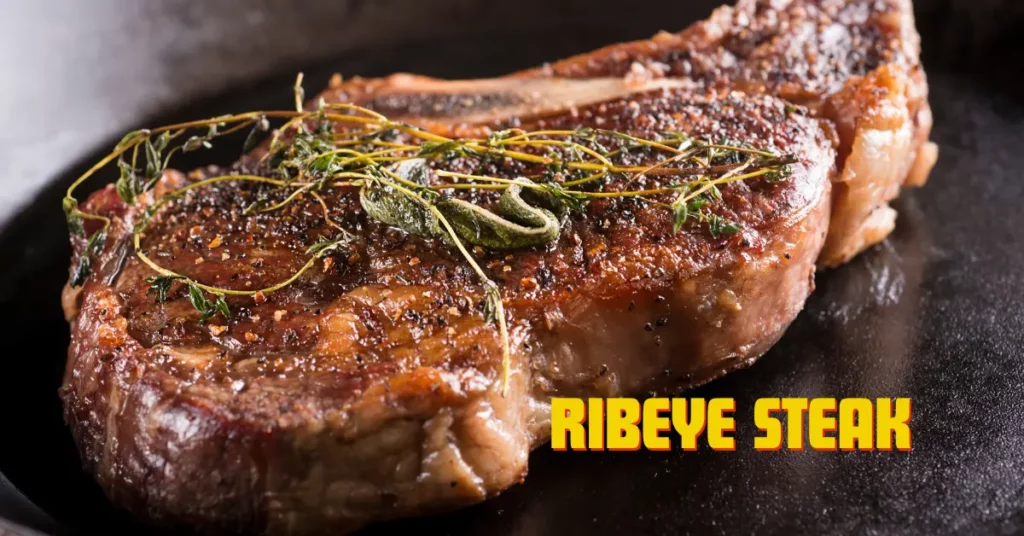This post may contain affiliate links. If you use these links to buy something we may earn a small commission. Thanks.
Ribeye steak is one of the most flavorful and tender cuts of beef, making it a top choice for grilling enthusiasts. Its rich marbling ensures juiciness and bold flavor, while the grilling process adds a smoky, charred crust that elevates its taste. Whether you are a beginner or a seasoned griller, this guide will walk you through everything you need to know to cook a perfect ribeye steak on the grill.
Choosing the Right Ribeye
The foundation of a great grilled ribeye starts with selecting the right cut. Here’s what to look for when buying ribeye:
Bone-In vs. Boneless
- Bone-In Ribeye: Offers extra flavor and retains moisture better due to the presence of the bone.
- Boneless Ribeye: Easier to cook evenly and often more convenient to handle on the grill.
Thickness Matters
A ribeye that is at least 1–1.5 inches thick is ideal for grilling. Thicker cuts allow better control over the internal temperature without overcooking the exterior.
Marbling and Quality
- Look for well-marbled ribeye steaks, as the fat content keeps the steak juicy.
- Choose USDA Prime or Choice grades for superior quality.
- Wagyu ribeye is a premium option that delivers exceptional tenderness and flavor.

Preparing the Ribeye for the Grill
Bringing the Steak to Room Temperature
Take the steak out of the refrigerator 30–45 minutes before grilling. This ensures even cooking and prevents the steak from becoming tough.
Pat the Steak Dry
Using a paper towel, pat the steak dry. A dry surface allows for a better sear.
Seasoning the Ribeye
- Simple Seasoning: Generously season both sides with coarse salt, black pepper, and garlic powder.
- Marinades or Dry Rubs (Optional): For extra flavor, try a marinade with soy sauce, olive oil, and Worcestershire sauce, or a dry rub with smoked paprika, onion powder, and cayenne pepper.
- Oil Lightly (If Needed): If your ribeye is lean, rub a small amount of oil (such as avocado or canola) on the surface.
Preparing the Grill
Choosing the Right Grill
- Charcoal Grill: Adds a deep, smoky flavor that enhances the ribeye’s natural taste.
- Gas Grill: More convenient and allows precise temperature control.
Preheating the Grill
Heat the grill to high temperature (450–500°F) to achieve a perfect sear.
Setting Up a Two-Zone Fire
- Direct Heat Zone: For searing the steak at high temperatures.
- Indirect Heat Zone: For finishing the steak at a lower temperature to reach the desired doneness.
Cleaning and Oiling the Grates
- Use a grill brush to remove debris from the grates.
- Lightly oil the grates to prevent sticking.
Grilling the Ribeye Steak
Searing on Direct Heat
- Place the ribeye on the direct heat zone and sear for 2–3 minutes per side.
- Avoid excessive flipping—let the steak develop a nice crust.
- If flare-ups occur, move the steak to a cooler part of the grill.
Moving to Indirect Heat
- After searing, move the steak to the indirect heat zone.
- Close the lid and continue cooking until it reaches your preferred doneness.
Internal Temperature Guide
Using a meat thermometer, check the internal temperature:
- Rare: 120–125°F
- Medium Rare: 130–135°F
- Medium: 140–145°F
- Medium Well: 150–155°F
- Well Done: 160°F+
Remove the steak 5°F before your desired temperature, as it will continue cooking while resting.
Resting and Serving
Why Resting is Important
Let the ribeye rest for 5–10 minutes before slicing. This allows the juices to redistribute, keeping the steak moist and flavorful.
Adding Finishing Touches
- Compound Butter: Place a pat of garlic or herb butter on top of the steak for extra richness.
- Fresh Herbs: Garnish with rosemary, thyme, or parsley for an aromatic boost.
Slicing the Steak
If serving a bone-in ribeye, slice the meat off the bone and cut against the grain for maximum tenderness.
Perfect Pairings for Ribeye Steak
Side Dishes
- Grilled Vegetables: Asparagus, bell peppers, and mushrooms complement the smoky flavors.
- Garlic Mashed Potatoes: A creamy, buttery side pairs beautifully with ribeye.
- Loaded Baked Potatoes: A classic choice topped with cheese, bacon, and sour cream.
Sauce Options
- Chimichurri: A fresh, herbaceous sauce with garlic and vinegar.
- Peppercorn Sauce: A creamy, peppery sauce that enhances the steak’s richness.
- Red Wine Reduction: A sophisticated touch for an elegant meal.
Beverage Pairings
- Red Wine: Cabernet Sauvignon, Malbec, or Syrah pairs well with the bold flavors.
- Whiskey: A smooth bourbon or single malt Scotch complements the smoky char.
- Craft Beer: A dark stout or hoppy IPA enhances the steak’s savory notes.
Final Tips for Grilling a Perfect Ribeye
- Use High-Quality Meat: The better the cut, the better the final result.
- Let the Steak Rest: Never skip the resting step!
- Invest in a Meat Thermometer: Ensures precise doneness without guesswork.
- Experiment with Flavors: Try different seasonings, woods (if using charcoal), and finishing touches.
Grilling ribeye steak is an art that gets better with practice. With the right techniques and attention to detail, you’ll be able to cook a mouthwatering ribeye every time. Fire up the grill and enjoy a perfectly cooked steak with your favorite sides and drinks.
